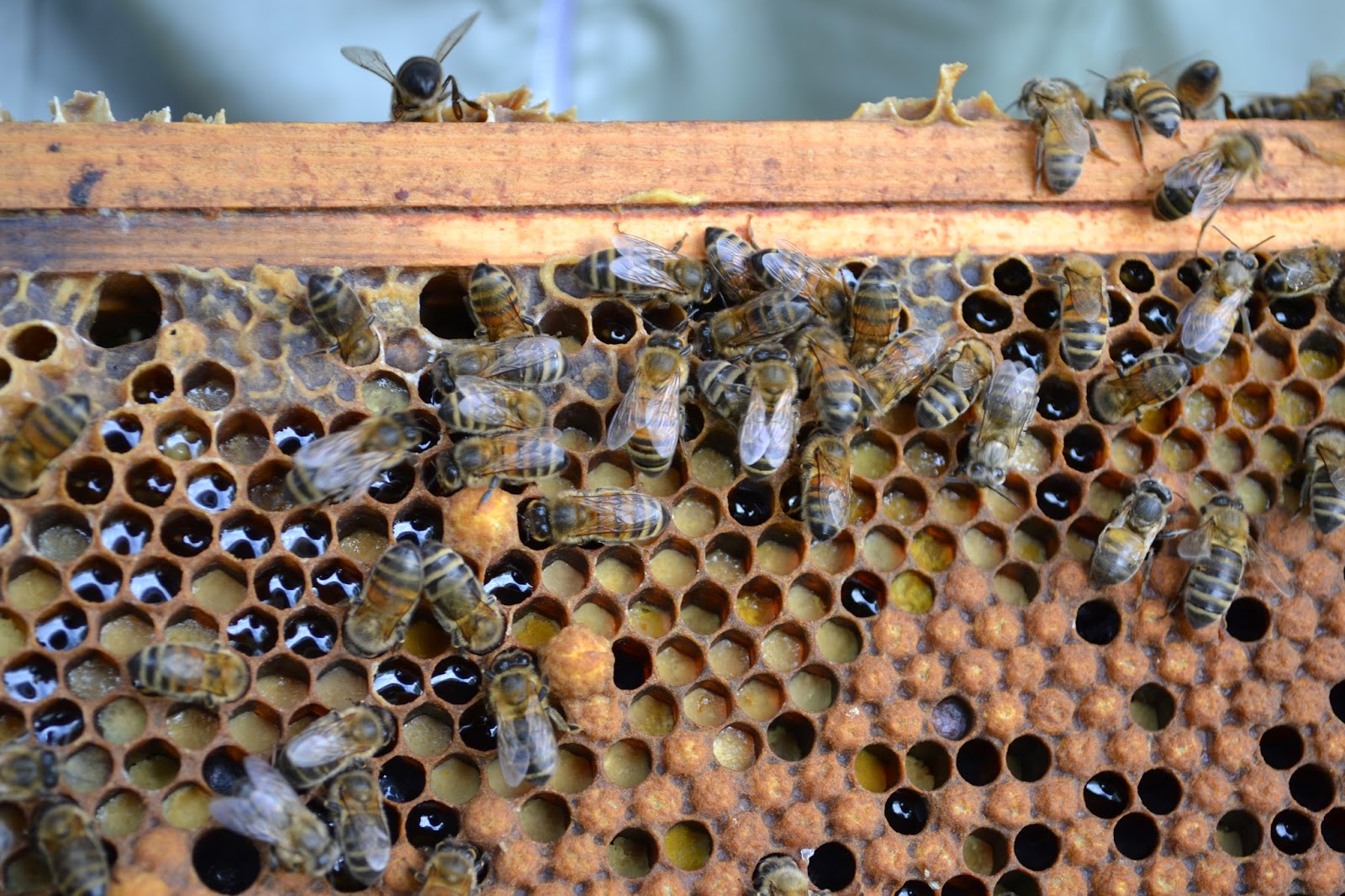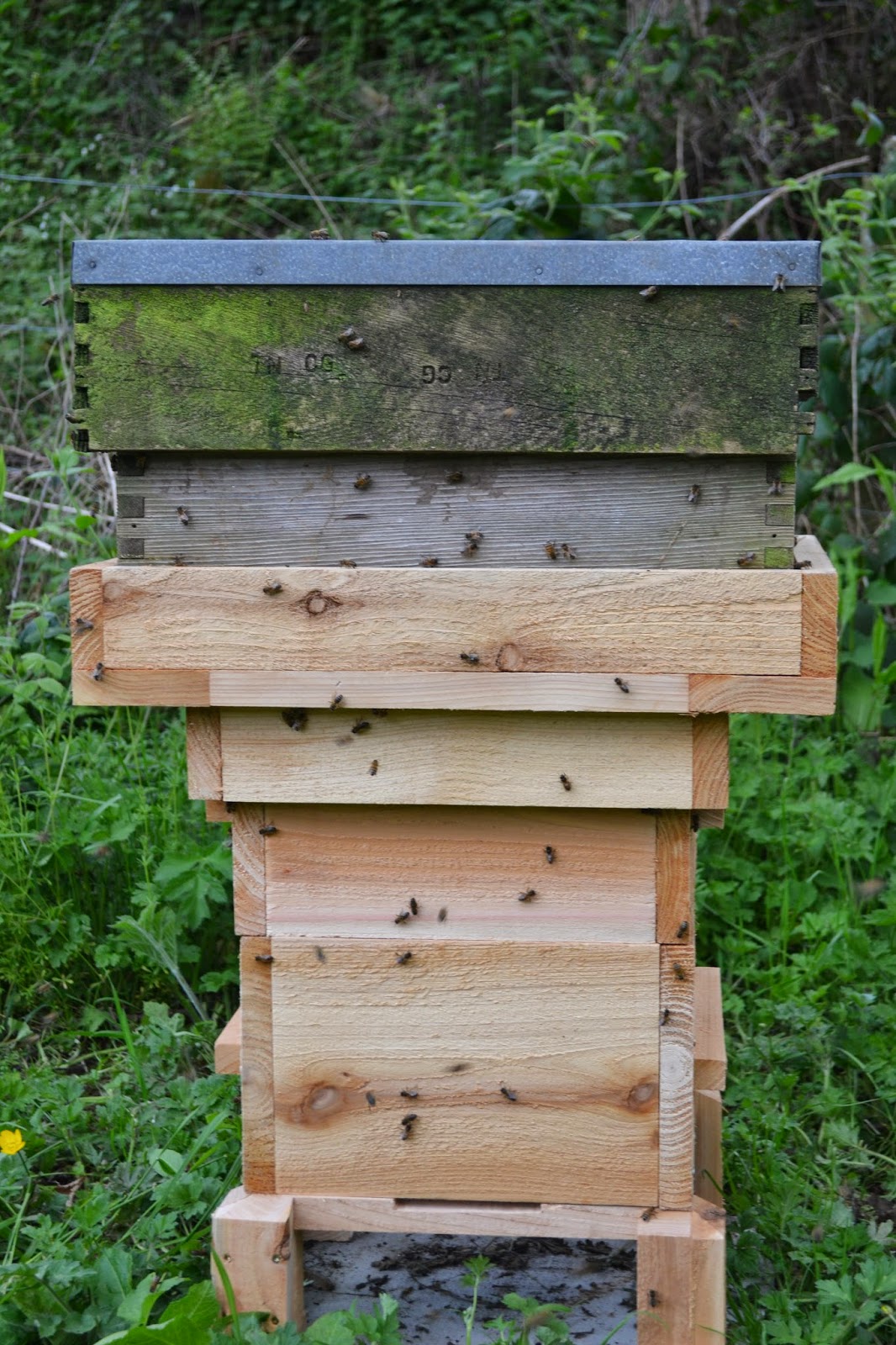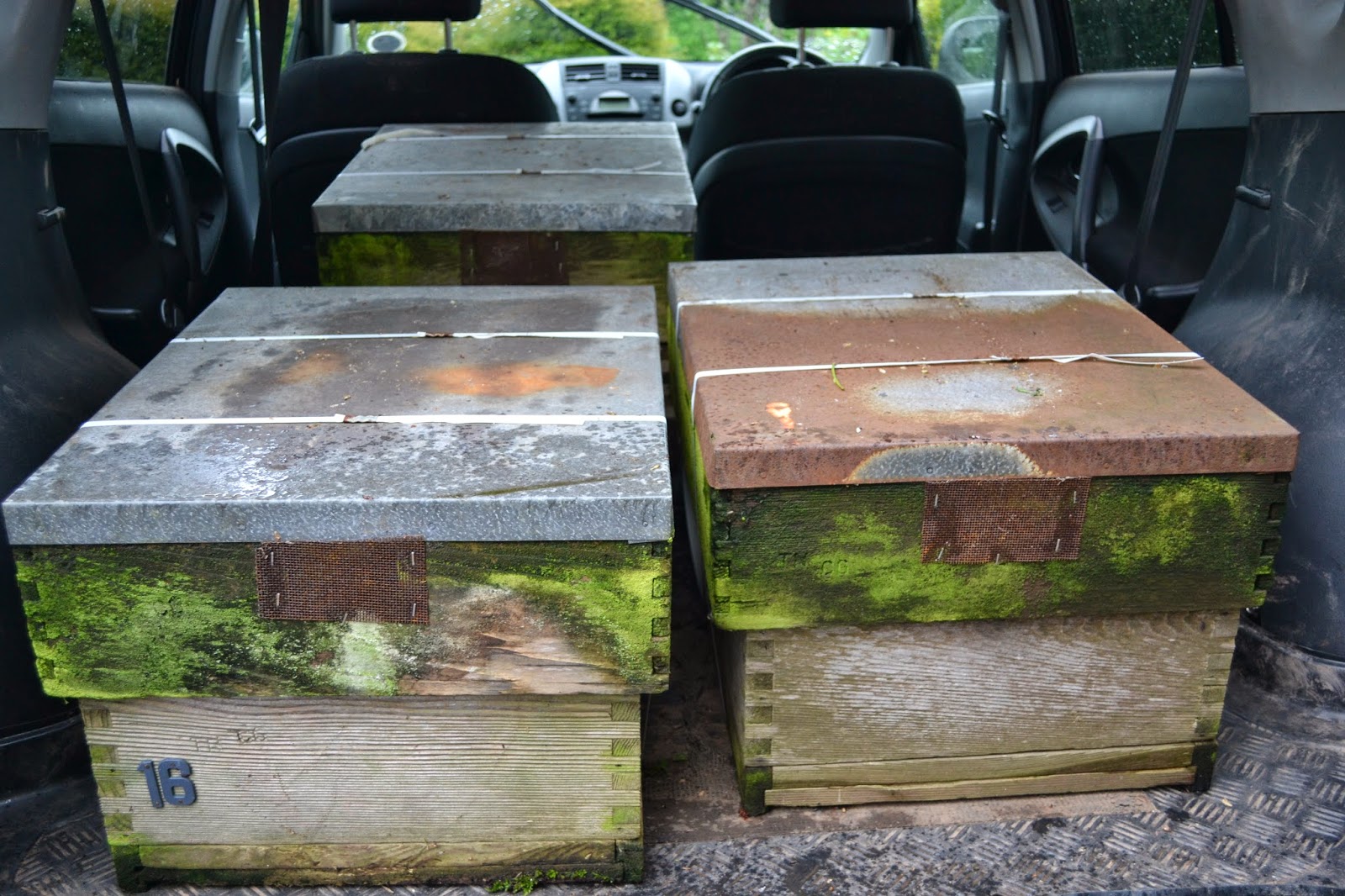Community bee update
The bees have been in residence now for about 10 weeks. So how are they doing?
 |
| Too heavy for one! |
One of the key premises of natural bee keeping is minimal interference so I haven't been down to the apiary poking about the hives very regularly. However, when I did try a quick look in the hive it became apparent that a normal observation would be challenging. The weight of a single, but full, Langstroth hive coupled with the adapter we are using, then stuck to a Warre box with propolis, meant that the whole construction was beyond my lone technique! However, I did manage to tip the top of the hive to look into the lowest Warre box and was disappointed to find it empty. I had expected that after such a provident start to the year they would have had to use the extra space for new comb. Not so. They are resisting most defiantly. Although this is frustrating it is by no means unusual. I have had whole boxes where, for some reason, they have not built on a particular frame. There's no rhyme or reason that we can see but I'm sure they have their reasons. Towards the end of the summer I shall have to assess again and consider what our next move will be.
The 'June Gap'
Traditionally, at this time of year, bee keepers will refer to the 'June gap'. This may seem odd. There are lots of flowers in bloom-how can there be a gap in bee forage?
After the full thrust of Spring with many plants desperately trying to get pollinated in time to make their fruits before the frost, the countryside appears to take a breath. Now is the time of the umbellifer.
Plants and insects have evolved together. The type of forage which a honey bee will be successful with(i.e find nectar and pollen) will have certain adaptations which enable the bee to get what it wants. One of the most obvious adaptations is the depth of the flower. Honey bees do not have the hugely extendable proboscis of a butterfly and will tend to stick to single, saucer shaped flowers-this includes the complicated flower heads of the umbellifers eg. wild parsley, hog weed, sweet cicely. These are readily found flourishing on roadside verges and in wild areas. I have left a few parsnips and carrots to flower in the allotment and these will attract lots of pollinators as well as honey bees.
And to every rule there is an exception; I have heard tell that honey bees have punctured holes in the bases of bluebell flowers to access the nectar. Canny little creatures!
There are moves in some areas to introduce a bee known as the Caucasian Grey which has a considerably longer proboscis and can, therefore, access a greater number of flowers.
What can we do to encourage the bees?
- As we leave the bounty of Spring it is important to make sure there is a ready supply of flowers available to the honey bee. The RHS produce guides on what's best and when. For forage it is worth looking at this resource.
rhs.org.uk/science/pdf/conservation-and-biodiversity/wildlife/rhs_pollinators_plantlist
- Often the Summer weather will bring more periods of dry spells. Like every other organism, honey bees need water too. The best way to provide this is in something like an upturned bin lid. The bees like to be able to approach the, non-moving, water feeling in control.
- Keep your use of pesticides to an absolute minimum. Consider other strategies like companion planting to distract insect pests from the scent of desirable plants. Tomatoes are extremely pungent and this year I have interplanted my Brussels sprouts with them.
- Leave some areas untouched if you can and preferably in the sun.
For more information on caring for the bees in the community visit: www.beefriendlymonmouthshire.org
 Meet the Brecon Bees! These are the third colony that we originally purchased, which live at Cradoc Road in Brecon.
Meet the Brecon Bees! These are the third colony that we originally purchased, which live at Cradoc Road in Brecon. 


































